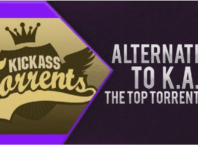The internet is the greatest repository of information in human history. By the latest estimates, there are now more web pages than there are people in the world, and the web has evolved to become our primary source for everything from news to shopping and media.
With such a vast array of information available, we have come to rely more and more on search engines like Google to help us make sense of the internet. Unless you already know a specific web address (URL), almost every internet journey starts with a search.
Of all the search engines, Google remains top of the pile and accounts for approximately 92% of all internet searches – equating to a frankly incredible 3.5 billion requests per day (or around 40,000 a second). However, as we have become sophisticated and demanding in the types of search we make, Google has started to expand its services to improve the accuracy and type of results it can display. Here are just three ways the titan of the search industry is starting to change its focus to meet increasingly complex demands:
Contents
Image searches
One area of internet search that is starting to grow in popularity is that of searching by image – also known as reverse image search. As Google’s Artificial Intelligence (AI) has improved, the ability of its computers to store, reference, and compare similarities between images has increased.
On Google, image searches are slowly beginning to gain traction as an alternative to word-only queries. Searching by image has wide-ranging implications, particularly for the e-commerce market, though it also has a huge range of other applications, for example, for travel and tourism queries. Exploring the world around you through images has never been easier.
Using Google to answer questions
Google’s ever-expanding database is increasingly seeking to answer questions people ask directly within search results without redirecting users to third-party websites. You will have likely already seen the relatively new ‘People also ask’ box which often displays in search listings if you ask Google a question – but just what is People Also Ask (PAA) and how does it work?
PAA is powered by complex machine learning which allows Google to scour its database of web pages when a user asks a specific question. Google’s advanced AI interprets the user’s query then references content from trusted websites which it deems related to the question. It then grabs text which it believes answers the initial query and places it directly into the search results. If the user then clicks to expand the answers, Google will display other related results. The search engine does similar if you ask it to convert miles to kilometers. In fact, these days, it can even do simple mathematics equations – all direct from the search bar.
Google’s AI can now evaluate the quality of website content
Content has always been important in the online world, but Google’s AI is now so sophisticated that it is learning to differentiate between good and bad quality content. While once it was enough to simply stuff keywords into a page of text in the hope of your website being found by the search engine, Google is now actively ‘reading’ and ‘interpreting’ prose and sentence structure, as well as cross-referencing text for accuracy. Using AI to understand and rate content improves the engine’s likelihood of displaying quality web links, making its results even more accurate.












